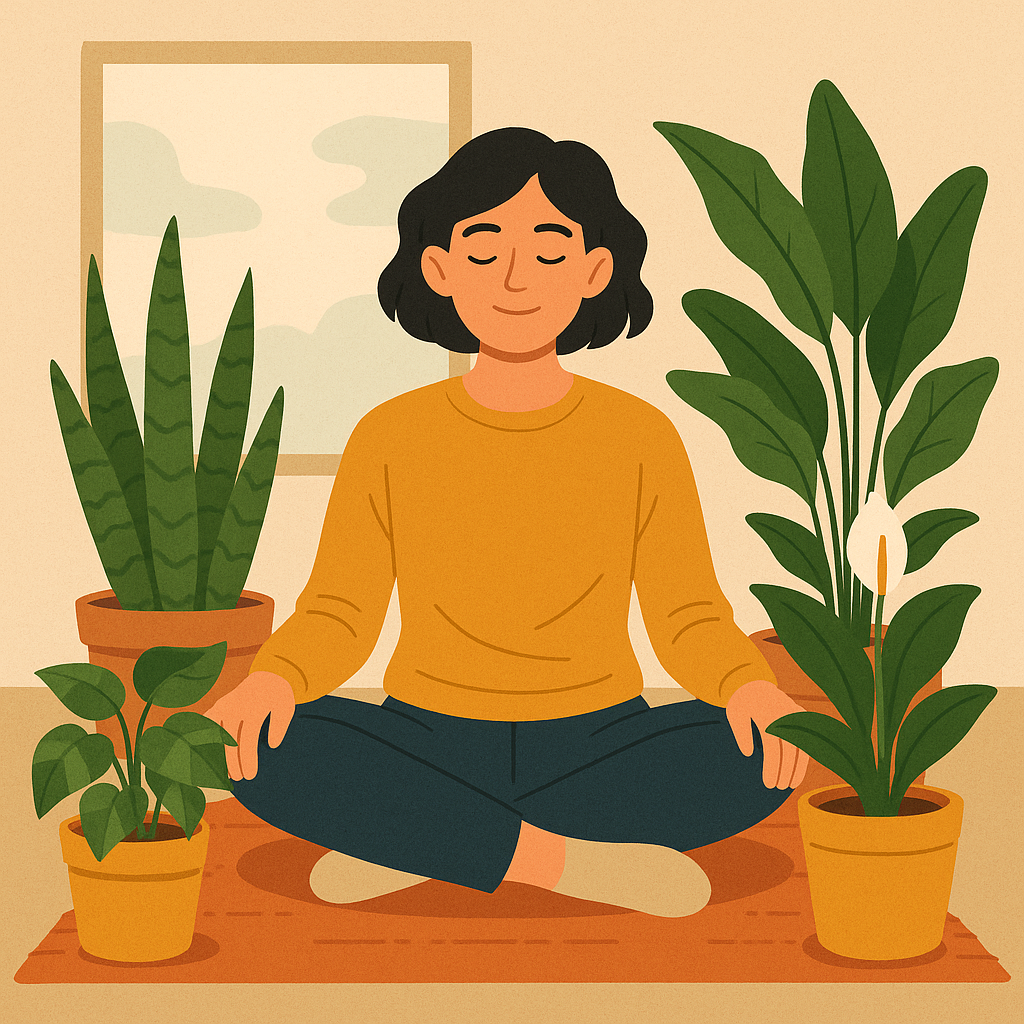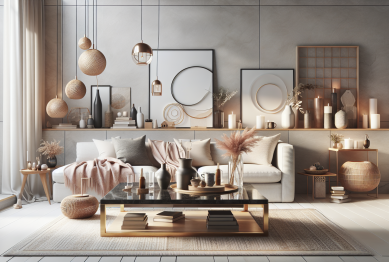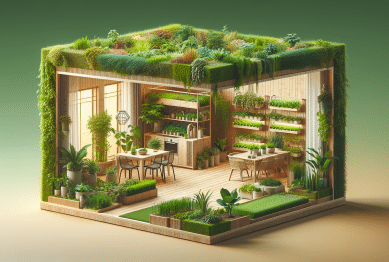In an era marked by digital overload, economic uncertainty, and a renewed focus on well-being, one simple, natural solution is taking root in homes and workplaces alike—indoor plants for mental health. What was once an aesthetic choice is now increasingly viewed as a practical tool to support emotional balance, reduce stress, and improve overall mental well-being.
This rising trend isn’t just anecdotal. New research and design practices in 2025 are spotlighting the psychological impact of biophilic environments—spaces that incorporate natural elements. As work-from-home routines persist and people seek manageable ways to enhance their mental health, indoor plants are becoming more than decoration—they’re low-maintenance mental health allies.

Why Indoor Plants Are Getting Attention in 2025
Recent social and environmental shifts have intensified interest in mental health-friendly interiors. The global rise in anxiety and burnout, paired with extended time indoors, has made people more conscious of how their environment affects their mood.
Here are three key reasons indoor plants are gaining popularity:
- Accessible support for stress relief: Unlike more complex wellness solutions, houseplants are affordable, non-intrusive, and adaptable to any space.
- Increased interest in natural living: From clean eating to eco-conscious design, consumers are leaning into nature-inspired lifestyles—and that includes bringing greenery inside.
- Validation through research: Mental health benefits of indoor plants are being increasingly supported by psychological and environmental science studies.
How Indoor Plants Impact Mental Health
1. Lowering Stress and Anxiety
A 2021 study published in the Journal of Physiological Anthropology found that simply interacting with indoor plants—like touching soil or pruning leaves—can reduce physiological and psychological stress levels. The act of tending to a plant shifts attention away from rumination and triggers a relaxation response in the brain.
Additional research shows that visual exposure to greenery helps reduce cortisol levels, our body’s primary stress hormone. This makes indoor plants especially beneficial for individuals working long hours from home or in high-pressure roles.
2. Boosting Concentration and Productivity
Indoor plants are also linked with enhanced cognitive function. A Harvard T.H. Chan School of Public Health study demonstrated that workers in “green” offices performed 26% better on cognitive function tests than those in conventional offices. Plants help improve air quality and provide visual stimuli that keep the brain more alert and focused.
In remote or hybrid work environments, adding a few indoor plants near your desk can serve as a low-effort productivity booster.
3. Supporting Emotional Regulation
Houseplants can create a sense of responsibility and structure, which is beneficial for those managing anxiety or depression. Even minimal caregiving—a weekly watering schedule or occasional repotting—can instill routine and purpose. Studies in Urban Forestry & Urban Greening suggest that plant ownership contributes to a stronger sense of personal agency, which supports mood regulation.
Trending Indoor Plants with Psychological Benefits
While all indoor plants offer some mental health support, a few have gained particular popularity in 2025 due to their visual appeal, air-purifying qualities, and low-maintenance care.
1. Snake Plant (Sansevieria)
- Known for: Releasing oxygen at night, making it ideal for bedrooms.
- Mental benefit: Supports better sleep, indirectly reducing stress.
2. Pothos (Epipremnum aureum)
- Known for: Fast growth and adaptability.
- Mental benefit: Visual growth can create a sense of accomplishment.
3. Peace Lily (Spathiphyllum)
- Known for: Elegant white blooms and toxin-removing properties.
- Mental benefit: Encourages a calm, clean-feeling atmosphere.
4. ZZ Plant (Zamioculcas zamiifolia)
- Known for: Surviving low light and neglect.
- Mental benefit: Great for beginners who may be intimidated by plant care.
Creating a Green Space for Mental Wellness: A Practical Guide
If you’re looking to use indoor plants for mental health, here’s a simple plan to help you get started.
Step 1: Start with One or Two Plants
Begin with a low-maintenance option like a ZZ Plant or Snake Plant. Place them where you spend most of your time, like your desk or bedside table.
Step 2: Integrate Into Routine
Choose a watering day once a week and check in with your plants. Observing small changes like new growth can be surprisingly rewarding.
Step 3: Build Your Green Corner
Over time, you can expand by creating a small green zone—adding hanging plants, trailing vines, or even a vertical garden. This gives the space a calm focal point.
Step 4: Use in Mindfulness Practices
Try combining your greenery with mindfulness. Do breathing exercises near your plant area or take a few minutes each day to sit quietly and observe your green space.
Considerations and Caveats
While indoor plants are helpful, they are not a substitute for professional mental health care. They can complement therapy or self-care routines but should not be seen as a stand-alone solution. People with allergies should also be mindful of plant types and avoid those that may produce mold or pollen.
Additionally, overloading your space with too many plants can lead to clutter, which may have the opposite effect—especially for individuals sensitive to visual overstimulation. Keep your green design balanced and intentional.
The Role of Indoor Plants in a Post-Pandemic Wellness World
In 2025, the trend of using indoor plants for mental health continues to expand across demographic groups—from Gen Z in urban apartments to retirees in suburban homes. Plant-based wellness has entered the mainstream not only through lifestyle influencers but also through workplace design and public health recommendations.
As organizations explore mental health-friendly environments, offices, schools, and hospitals are increasingly adopting biophilic design principles—bringing natural elements indoors to improve mood and mental clarity. This shift isn’t driven by luxury or trendiness but by growing awareness that our environments profoundly affect how we feel and function.
Final Thoughts
Indoor plants for mental health are more than a passing aesthetic preference—they’re rooted in science, supported by wellness experts, and embraced by people looking for small but effective ways to feel better in their daily lives. Whether you’re trying to manage stress, stay focused, or simply feel a bit more grounded, a well-placed plant may be a step toward better mental balance.
References:
- Lee, M. S., et al. (2015). “Interaction with indoor plants may reduce psychological and physiological stress by suppressing autonomic nervous system activity in young adults.” Journal of Physiological Anthropology, 34(1), 21.
- Allen, J. G., et al. (2016). “Associations of cognitive function scores with carbon dioxide, ventilation, and volatile organic compound exposures in office workers.” Environmental Health Perspectives, 124(6), 805–812.
- Bringslimark, T., et al. (2009). “The psychological benefits of indoor plants: A critical review of the experimental literature.” Journal of Environmental Psychology, 29(4), 422–433.
- van den Berg, A. E., & Custers, M. H. G. (2011). “Gardening promotes neuroendocrine and affective restoration from stress.” Journal of Health Psychology, 16(1), 3–11.
- Hall, C. R., & Knuth, M. J. (2019). “An Update of the Literature Supporting the Well-being Benefits of Plants: Part 1.” Journal of Environmental Horticulture, 37(1), 30–38.









